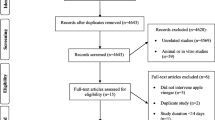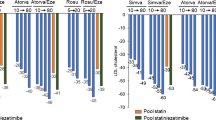Abstract
Traditional risk factors for coronary artery disease (CAD) can only explain approximately two thirds of observed clinical events. This has maintained interest in other nutritional and biochemical factors that might contribute to the underlying pathophysiology of vascular disease. Two such factors are dietary antioxidants and plasma homocysteine.
Established risk factors such as hypertension, smoking and diabetes mellitus are all associated with increased oxidative stresses due to excess free radical activity in the vascular wall. This may facilitate the development of vascular disease because of (i) increased oxidation of low-density lipoprotein (LDL) particles which increases their propensity to deposition in the vascular wall, (ii) inactivation of endotheliumderived nitric oxide, and (iii) direct cytotoxicity to endothelial cells. Protective antioxidant molecules include vitamin C and vitamin E of which the latter is lipid soluble and is the primary antioxidant defence in circulating LDL particles. Epidemiological studies have suggested strongly that individuals who have high circulating concentrations or dietary intake of natural antioxidant vitamins are protected against vascular disease events (18). Furthermore, many studies have demonstrated a beneficial effect of natural and synthetic antioxidants on surrogate markers of vascular disease such as endothelial function and lipoprotein oxidation. However, large prospective randomized controlled intervention trials, mostly involving vitamin E (e.g. CHAOS, HOPE (22)), have failed to demonstrate any beneficial effect upon vascular mortality in high risk individuals. Possible reasons for these disappointing results include the pro-oxidant effects of high dose antioxidant supplements, particularly in patients with established vascular disease.
Homocysteine is a sulphydryl-containing amino acid derived from the demethylation of dietary methionine. Epidemiological studies over 30 years have shown that increased concentrations of homocysteine are associated with vascular disease. This link is independent of other risk factors, is consistent across many studies and is strongly dose-related. Recently, evidence has accumulated to suggest that this link is also biologically plausible because homocysteine promotes oxidant injury to the vascular endothelium, impairs endothelium-dependent vasomotor regulation and may also alter the coagulant properties of the blood. Plasma homocysteine levels can be reduced by dietary supplements of folic acid and B vitamins. Studies are currently being undertaken to examine the impact of these vitamins in high risk patients and, thereby, establish a causative role for homocysteine in promoting vascular events.
Similar content being viewed by others
Author information
Authors and Affiliations
Rights and permissions
About this article
Cite this article
Maxwell, S. Coronary artery disease – free radical damage, antioxidant protection and the role of homocysteine. Basic Res Cardiol 95 (Suppl 1), I65–I71 (2000). https://doi.org/10.1007/s003950070012
Issue Date:
DOI: https://doi.org/10.1007/s003950070012




